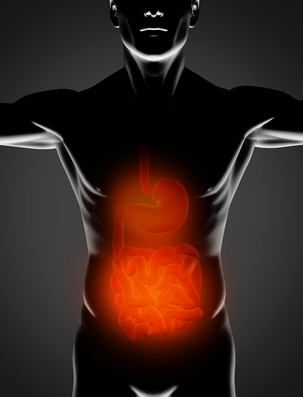- About Us
- Services
- Detox
- Massages
- Massages
- Abhyanga
- Padabhyanga
- Champi Massage
- Neck And Shoulder Massage
- Back Massage
- Shirodhara
- Takradhara
- Dhanyamla Dhara
- Kati Vasti
- Janu Vasti
- Hridaya Vasti
- Pinda Sweda
- Griva Vasti
- Churna Pinda Sweda
- Shashtika Shali Pinda Sweda
- Udwarthanam
- Ayurvedic Marma Massage
- Pizhichil
- Postnatal Massage
- Pregnancy Massage
- Karna Purana
- Netra Tarpana
- Thala Pothichil
- Navel Displacement Treatment
- Massages
- Treatments
- Retreat
- Resources
- Shop
- Contact Us
- Book Now
Cart
- How to Approach Yoga
- Streams of Yoga
- Yoga Poses
- Services
- Pratyahara
- Niyama/ Self Discipline
- Asanas/ Body Postures
- Yama/ Social Values
- More
- Raja Yoga
- Bhakti Yoga
- Karma Yoga
- Jnana Yoga
- Child Pose
- Downward-Facing Dog
- Staff Pose
- Cobra Pose
- More
- Yoga Therapy Consultation
- Group Yoga Classes
- Meditation Classes

Concept of Ama and Agni
As mentioned before the purpose of Pancha karma is to eliminate the toxins accumulated in the body. According to Ayurveda, these toxins (ama) are produced as a result of low metabolic fire (manda- agni).
WHAT IS AGNI?
Agni means fire. It is the energy and particles that help the metabolism function in the body. It is agni that digests the food we consume. When agni functions properly, the food is digested well and assimilated properly into our body. Agni can be affected with various causes like improper diet or stress, and can become misaligned and this results in the improper digestion of food. Agni is classified into 13 types and comes under three main headings

JATHARAGNI
This is the most important type of agni. It is located in the jathara (abdomen) and digests various types of foods and separates nutrients (rasa) and wastes (mala).

DHATWAGNI
Dhatwagni means agni related to tissues. These are the factors of agni related to metabolism other than digestion. There are seven tissues in the body as per Ayurveda,…

BHOOTAGNI
Bhoota stands for the five great elements of the body- earth (prithvi), water (ap), fire (tejas), wind (vayu) and space (akasha). The five bhootagnis act on…
OJAS (Essence of tissues)

Ojas is a unique concept discussed in Ayurveda. It is the essence of all the tissues (dhatus) and is responsible for the strength, immunity and mental and physical well-being of a person. When the agni is well balanced and tissues are well formed and nourished, ojus performs at its peak, bringing the best out of the individual.
WHAT IS AMA (TOXINS)?
When the agni (metabolic fire) in the body is not healthy, digestion and other metabolic functions are affected, which produces various unnecessary by-products and an increased amount of waste in the body. For example, when the digestive fire is poor, the food we eat does not break down properly or the food only gets partially digested. Partially digested food in the long term causes irritation of the gut and this is then is referred to as ama/ toxins. These improperly digested substances can cause adverse effects and lead to the inflammation and/ or stiffness of the whole body and can lesd to leaky gut syndrome. The ama comes into circulation and affects the balance of doshas and blocks the body channels. This leads to the build-up of toxins in the body. This build-up of toxins can happen with the doshas, dhatus (tissues) or malas (body wastes) and this leads to problems and diseases according to the sites/ functions which is affected. Physiologically, ama (toxins) can be considered as the unwanted metabolic by-products and/ or accumulated waste products of the body.


Ayurveda explains five basic reasons for accumulation of toxins in body

- Poor digestion which leads to accumulation of undigested or partially digested food.
- Improper metabolism which leads to accumulation of unnecessary by-products.
- Poor elimination of wastes which leads to accumulation of wastes in the body.
- Blocked channels leading to imbalances of doshas and body tissues.
- Microbial toxins.
Symptoms of ama (toxins) in the body
The early symptoms of accumulation of ama in the body are indigestion, fatigue, constipation, reduced or dark urine, general discomfort, uneasiness, heaviness, feeling of gas/ air stuck in the body, feeling drowsy, feeling foggy, heaviness in sensory organs and so on leading in to imbalances and diseases if not addressed early. Ama is considered as the root of all internal disorders of the body.

The treatments in Ayurveda
Ayurvedic treatments are classified into two broad categories; Samana (balancing) and Sodhana (purifying).

Samana
Samana means to calm. Here the imbalances are calmed by the use of a wise mix of herbs, diet and lifestyle modifications and massage therapies.

Sodhana
Sodhana means cleansing. Here the body is renewed and recovered from the illness by processing the toxins and cleansing the system. If the patient is strong enough, the best course of treatment recommended for any sort of illness and maintaining and boosting health in Ayurveda is sodhana. Sodhana is done by five purificatory therapies that come under the heading of PANCHAKARMA.
Lorem ipsum dolor sit amet, consectetur adipiscing elit. Ut elit tellus, luctus nec ullamcorper mattis, pulvinar dapibus leo.






